A safe pilot is one who respects the importance of the aircraft’s weight and balance. In this guide we will review what weight and balance is as well as how to calculate it. We will also discuss some of the most common weight and balance mistakes that other pilots have made.
Let's start!
 What is weight and balance?
What is weight and balance?
“Weight and balance” is a term that student pilots learn right away. It refers to two of the main factors that significantly impact aircraft performance, handling characteristics and safety.
Weight refers to the total weight of the empty aircraft plus everything on board, and balance is defined by the FAA as “the location of the CG (center of gravity) along the longitudinal axis of the aircraft.”
Why is weight and balance important, and what happens if my weight and balance is off?
If your aircraft is overweight or if the center of gravity is off, you are putting yourself, your aircraft and your passengers at risk.
You will require increased speed and runway length for takeoff. If your weight and balance is too far off, you may be unable to take off at all or your rate of climb may be too shallow to clear obstructions.
Once in the air – if you make it that far – the controllability and stability of your aircraft will be significantly negatively impacted. You will have a lower maximum altitude capability, will burn more fuel and will have a higher stall speed. When you come in for a landing, you will require additional landing distance.
Add in other factors that reduce performance – think high density altitude, low engine power, wing icing, or an emergency situation – and you have a recipe for disaster.
 What factors impact my weight and balance?
What factors impact my weight and balance?
In addition to the weight of your fuel, passengers and baggage, there are several other considerations to keep in mind. Factors like high elevations and increased density altitude mean that an aircraft which is within weight and balance limits at sea level will be outside those margins at altitude or in conditions that simulate the effects of high altitude.
Allow yourself a safety margin and if your flight plan takes you to an airport with a higher density altitude, take that into account when calculating your initial weight and balance.
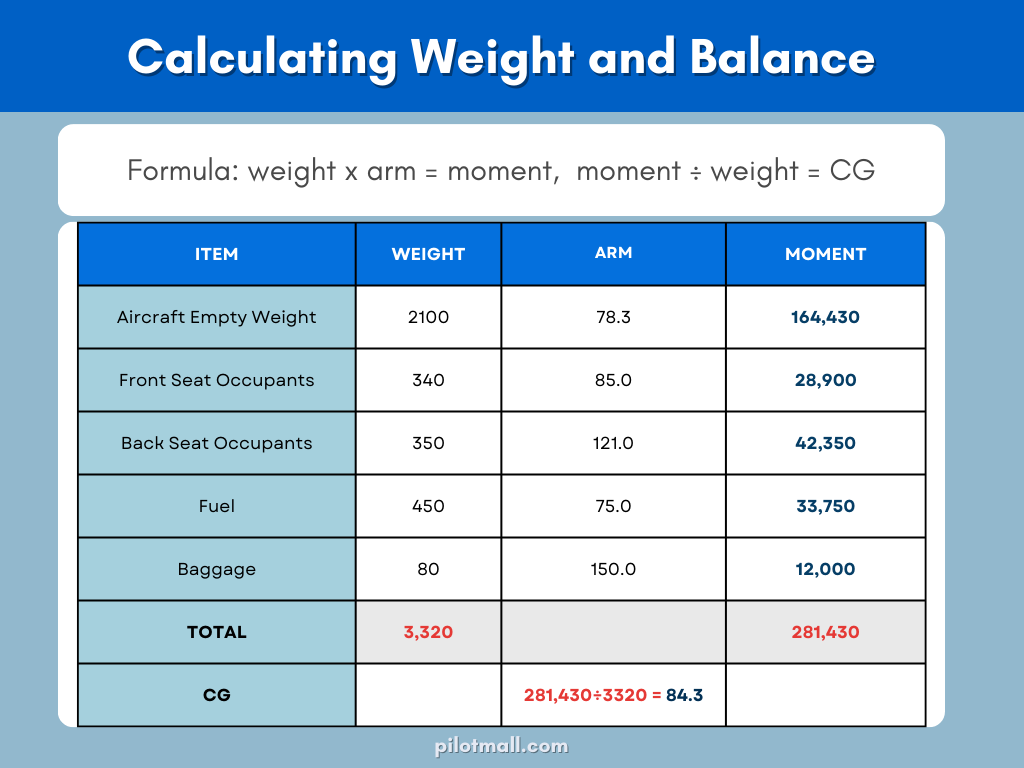 How to Calculate Weight and Balance
How to Calculate Weight and Balance
At its simplest, the calculation is:
weight x arm = moment
Remember this aircraft weight and balance formula using the acronym “WAM.” What does that mean? Let’s break it down. You can also watch a weight and balance tutorial that explains the concepts and calculations.
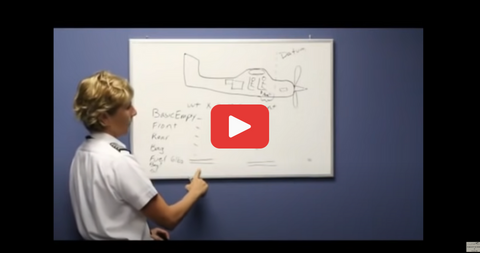
1. Determine weight of each item
The weight portion is self-explanatory. You will need to know your aircraft’s basic empty weight as well as the weights of everything you are adding in. That means you, your passengers, baggage, cargo, fuel and anything else.
2. Determine arm of each item
Each weight will be multiplied by the “arm.” The empty weight arm will be given to you by the aircraft manufacturer and will be updated if you have work done on your aircraft that impacts this number.
The arm for each item is its distance (in inches) back from the “datum line” – a manufacturer designated point towards the nose of the aircraft. In small GA aircraft, the datum line is often the firewall.
The further towards the back of the aircraft a given weight is, the greater an impact it has on center of gravity (CG). Remember this by thinking of how much easier it is for you to hold a 20-pound weight close to your chest vs with your arm extended in front of you.
The Pilot’s Operating Handbook for your aircraft will supply you the arm numbers for each seat and compartment on your plane.
3. Calculate moment of each item
Multiply the weight and arm of each item to get your moment.
4. Calculate total aircraft weight
Add your basic empty weight plus all the other weights to arrive at your total aircraft weight.
5. Calculate overall arm / center of gravity
The overall arm of the aircraft is its center of gravity. To calculate all of this, add up the total moment numbers. Divide total moment by total weight to arrive at your overall arm number.
 Make it simple by using a weight and balance calculator app
Make it simple by using a weight and balance calculator app
You don’t have to do all the math by hand. Try out an app like Flight Pad that will do these computations for you.
How do I know if my weight and balance is within limits?
Determining if your total weight is within limits is straightforward. Compare your total weight to the max gross weight your aircraft is rated for and ensure you are below this limit.
The balance, or center of gravity determination requires using your total weight and overall arm to plot a point on a gravity envelope graph. If your point falls within the flight envelope, you are good to go.
If it is outside, your aircraft is not balanced, and you must adjust. Remember that you can be under your maximum weight but still be off on your center of gravity.
What do I do if my weight and balance is off?
If your weight is off, of course you must leave something – or someone (such as your mother-in-law) – behind to decrease the weight. A center of gravity issue may also be corrected by reducing weight, but if the max weight is fine and only the center of gravity is off, try simply moving a heavier item – or person – towards the front of the aircraft and re-doing your calculations.
Consider putting your heavier passengers up front, and this will usually fix any center of gravity issues.
What are the most common weight and balance mistakes?
Know what others have done wrong so you can learn from and not duplicate their mistakes. Here are some of the most common pilot errors when it comes to weight and balance:
1. If it fits, it flies
Inexperienced pilots may make the mistake of thinking that they are able to fill all the seats plus the baggage compartment, carry full fuel and still stay within the weight and balance limitations. On many four and six-place aircraft, this is simply not the case.
2. Rounding the weights
Precision is your friend for weight and balance calculations. Each little rounding on its own may not make a big difference, but if you round all of your numbers, by the time you make your final calculations, you may be off by a substantial amount.
Don’t cut corners and allow yourself to accidently fly with an overweight aircraft. Weigh all baggage before it is loaded so that you know exactly what is going on your aircraft.
3. Pushing the stated maximum
Too many pilots – even, and perhaps especially experienced pilots – have made the mistake of thinking they could push the envelope and fly slightly overweight “just this one time.” It simply isn’t worth it.
If your calculations show that you are overweight, go back and decide what you will leave behind so that the numbers work out.
4. Failing to convert numbers
A classic rookie mistake is to forget to convert the fuel numbers from gallons to pounds. It is a simple mistake, but one that could cause your calculations to be off by hundreds of pounds. Double check yourself and be sure your conversion is correct.
Weight and Balance Terms for Pilots
There are terms that are essential for pilots to know regarding the importance of weight and balance in aircraft.
-
Arm: the span in inches from the reference datum line to the center of gravity of an item.
-
Center of Gravity: the spot where an aircraft would be perfectly balanced if you could suspend it from that point.
-
Standard Empty Weight: the total weight of an aircraft, including its airframe, engines, and all fixed items of operating equipment that are permanently installed within it, like fixed ballast, hydraulic fluid, unusable fuel, and full engine oil.
-
Basic Empty Weight: the standard weight plus the weight of all optional and additional components that have been added.
-
Licensed Empty Weight: includes the aircraft structure, its motor(s), unusable fuel, and undrainable oil, as well as all factory-installed options. All components that make up this total are listed in the equipment list.
-
Fuel Load: the amount of fuel on board that can be used up. This is not including the fuel needed to fill the lines or the residual stuck in the tank sumps.
-
Useful Load: the total mass of the pilot, copilot, passengers, luggage, available fuel, and useable oil. This is the difference between the maximum takeoff weight and the basic empty weight of general aviation aircraft only.
-
Payload: the weight of occupants, cargo, and baggage.
-
Maximum Ramp Weight: the total amount of weight on a filled plane, together with all fuel.
-
Maximum Takeoff Weight: the maximum allowable weight for takeoff.
-
Maximum Landing Weight: the highest weight an aircraft is authorized to have when it begins its descent onto the runway
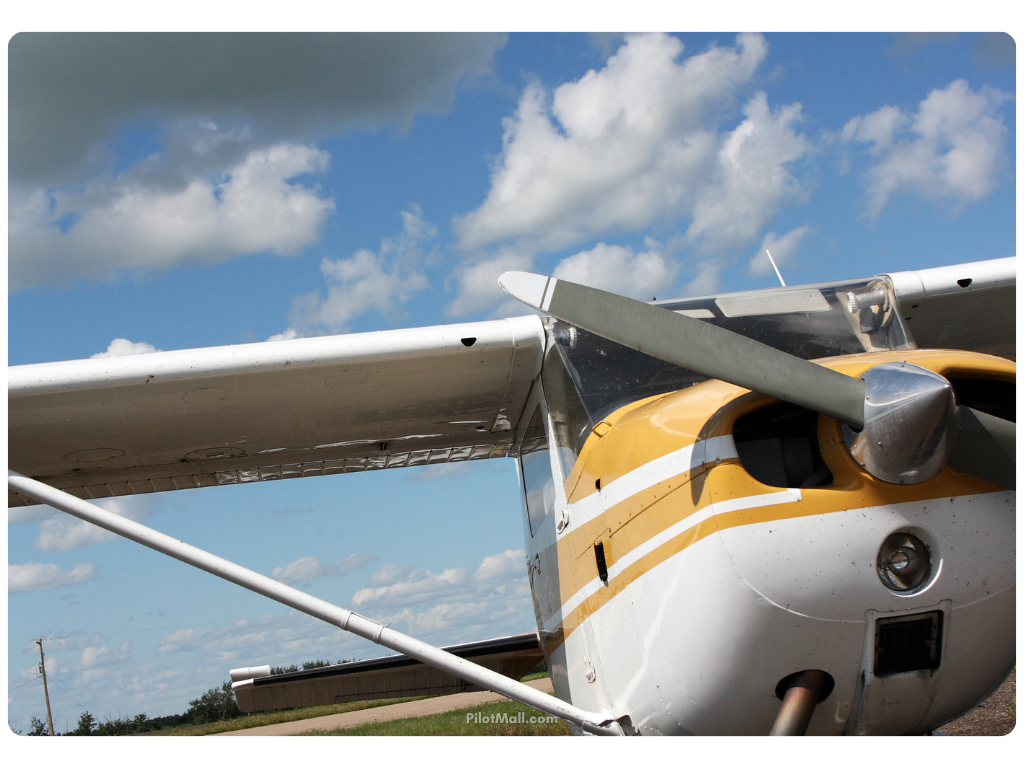 In Summary
In Summary
One of the hallmarks of a safe pilot is a strong grasp of weight and balance concepts paired with consistent practice of flying within the envelope. Remember: do precise calculations, avoid common mistakes, and make sound weight and balance judgment calls so you too can be a safe and responsible pilot.
The FAA Aircraft Weight and Balance Handbook is a great resource for learning more about this topic.
Want to learn other aviation calculations?
Our guides are designed to help student pilots become professional pilots and for private pilots to brush up on their knowledge and skills.
Did you find this article helpful?
Do you think we missed anything weight and balance related? Let us know in the comments below!

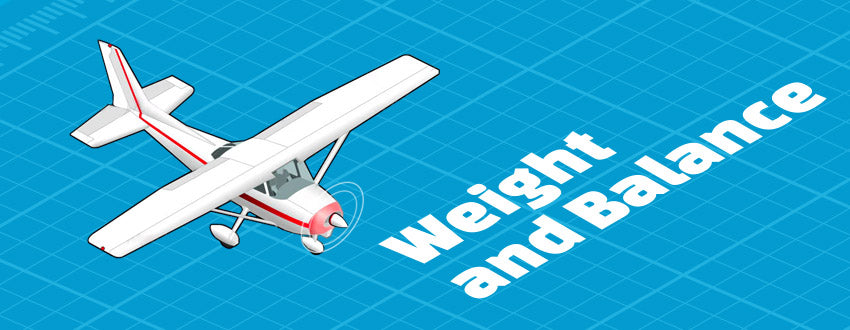
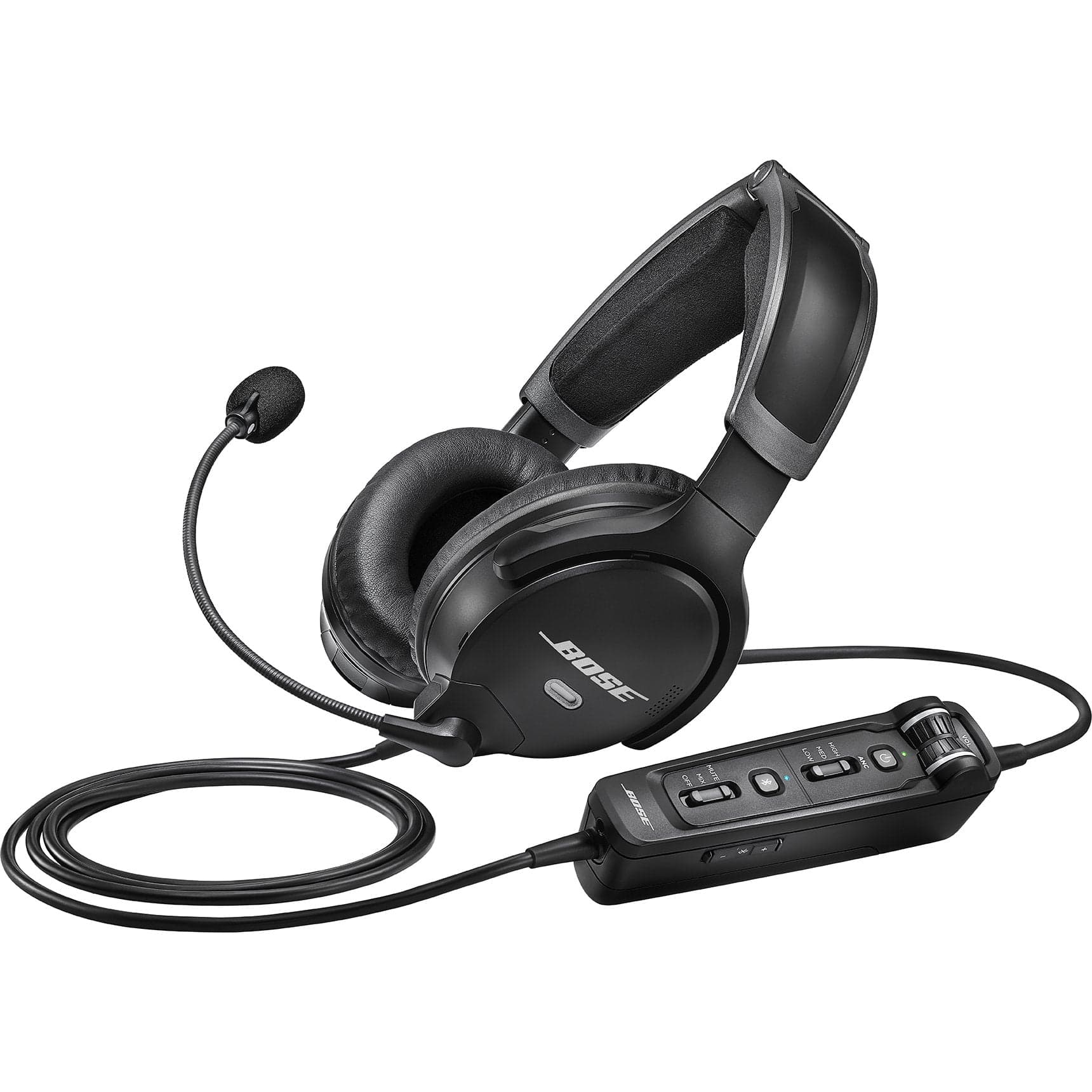
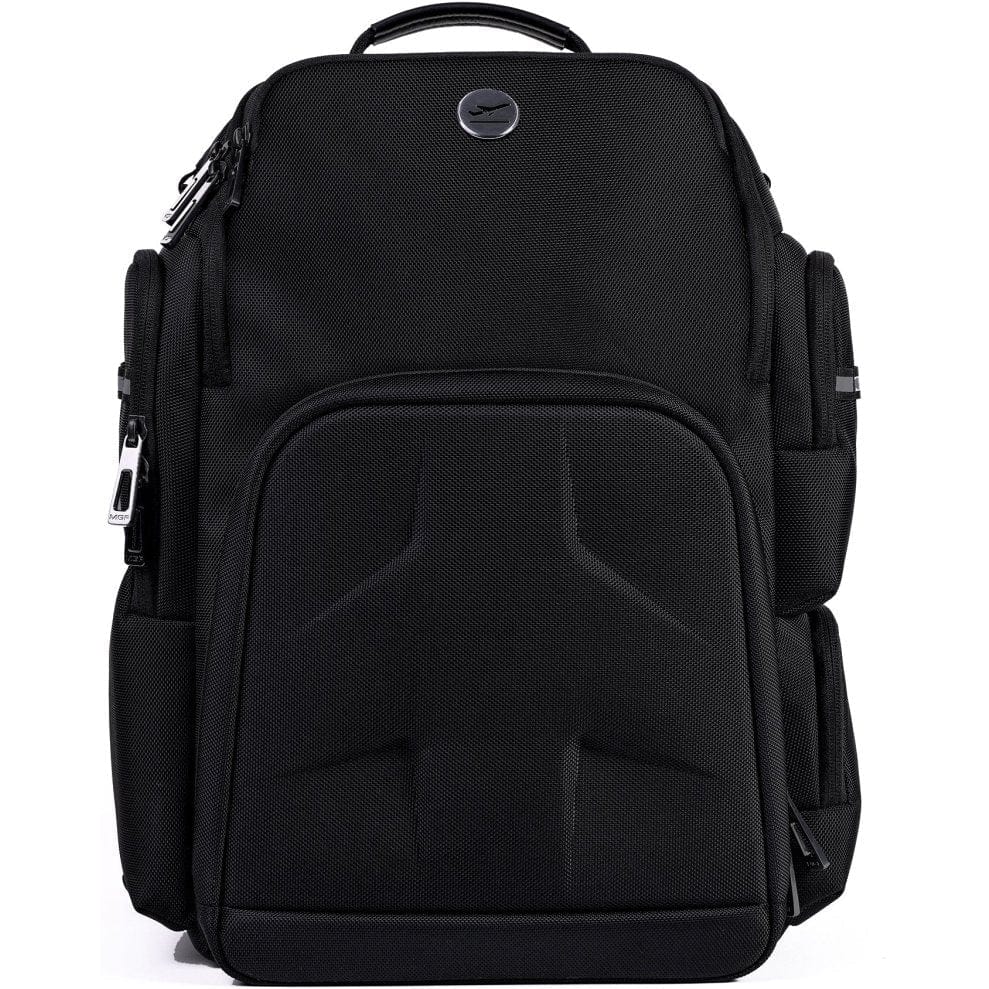
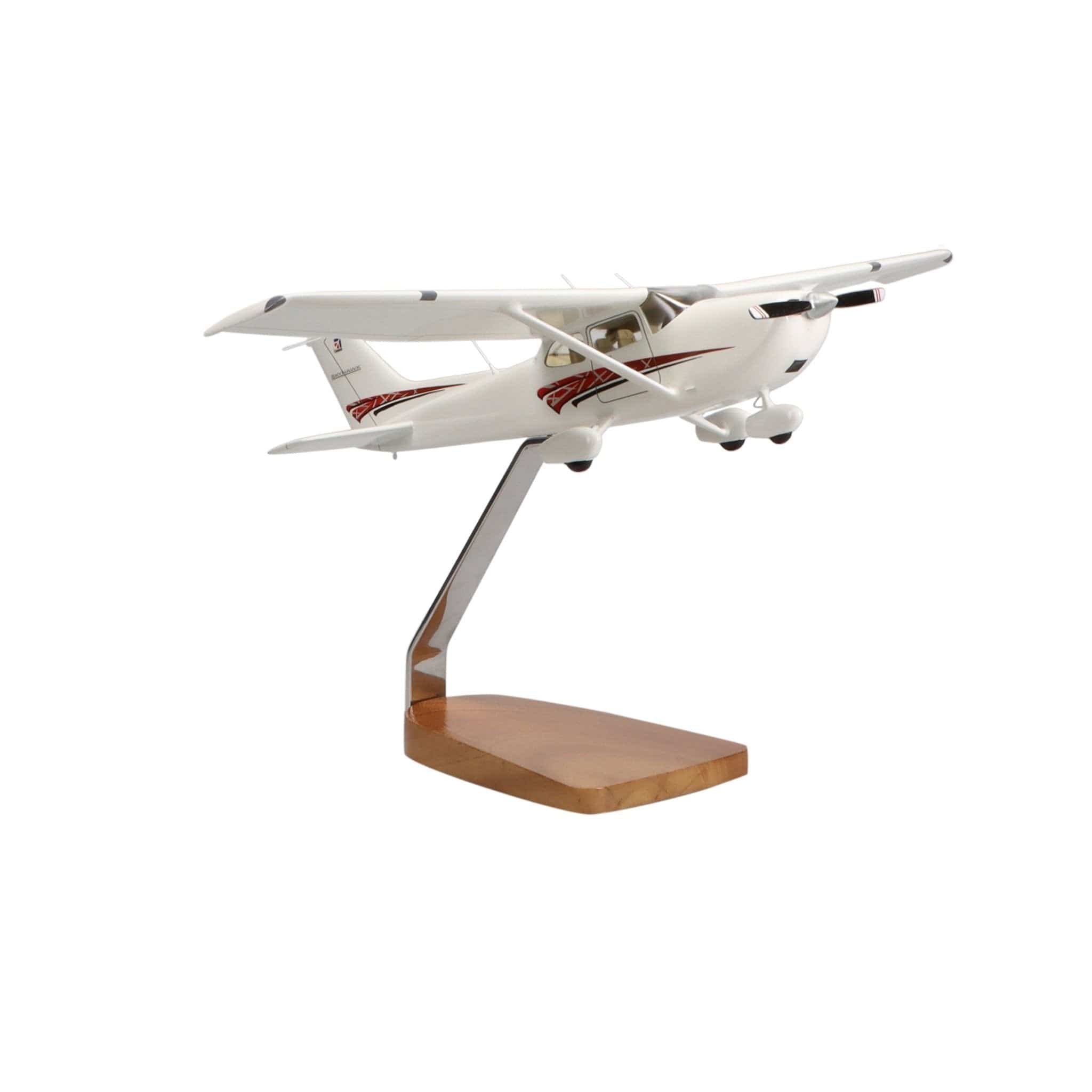



1 comment
salah ali saleh
I am ground school instructor, located in Libya, loving to feed me more about teaching techniques and any related support that might be helpful in training field.
my warms regards to all your staff